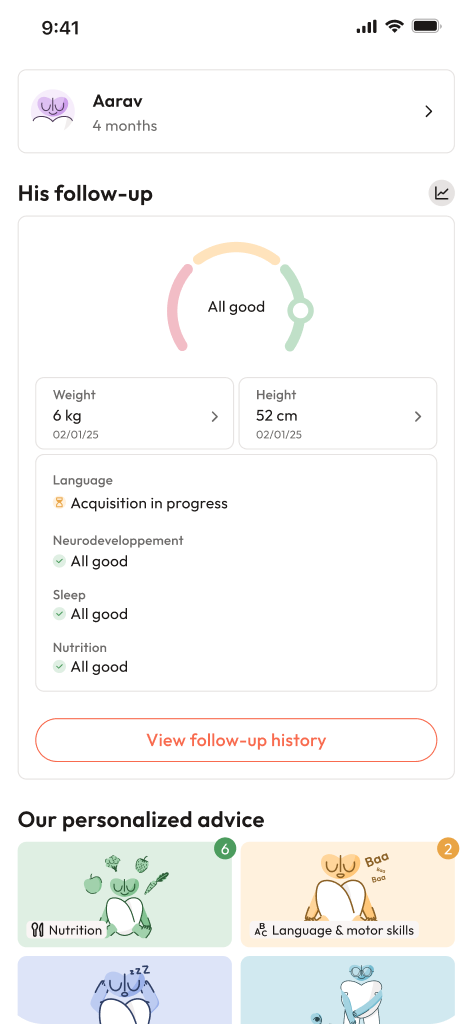When a faint line appears on a home test or lab results mention the beta hCG hormone, it can open a floodgate of emotions and, inevitably, a tangle of questions. Am I really pregnant? Are these numbers “good”? What if they’re rising more slowly than expected? Some parents may find relief, others experience uncertainty, and all look for clarity in a world that suddenly feels charged with meaning. Behind every beta hCG result lies a marvel of human biology—plus a dash of laboratory science, a sprinkle of maths, and yes, sometimes a complex web of interpretation.
In this exploration, parents will find plain-language answers on the true purpose and limits of this pivotal pregnancy hormone. From the first chemical whispers of implantation, through the bewildering rise and eventual fall, to its unexpected roles in fertility treatment and even rare cancers, the beta hCG hormone becomes your invisible companion. Discover why doctors repeat tests, how ultrasound adds context, what happens when values behave unpredictably (hello, biochemical pregnancy, ectopic, or molar!), and why one number alone never tells the whole story. Expect actionable tips, essential timelines, and a careful balance between scientific rigour and real-world reassurance.
Beta hCG hormone: Demystifying the First Signal of Pregnancy
Your Essential Takeaways—Quick, Clear and Compassionate
- A single positive beta hCG hormone test is clear: the pregnancy hormone is present in your body. Yet, one measurement by itself cannot confirm the pregnancy’s location, nor offer a guarantee. Think of it as the beginning, not the conclusion.
- Doctors recommend a series: a repeat blood test every 48–72 hours tells a ‘story’—is the level doubling, stalling, or falling? Patterns guide next steps. This rhythm is the key for early pregnancy decisions.
- Any heavy bleeding, persistent severe pain, episodes of fainting, or dizziness? Such symptoms need urgent attention—these override any number on a report.
What One Beta hCG Measurement Reveals—and What Remains Hidden
One value provides a snapshot: yes, a pregnancy is detected, and when combined with the timing of your cycle, sometimes an approximate gestational age. What it cannot reveal: whether the pregnancy is safely inside the uterus, whether a heartbeat is present, or if the pregnancy will progress successfully. This is where serial (repeated) tests step in—the beta hCG hormone should rise, almost doubling every two to three days in early viable pregnancies. A slow climb, plateau, or fall brings different considerations: possible early loss, ectopic risk, or misdated cycle. Here, transvaginal ultrasound steps into the spotlight, visualising both location and viability, especially as beta hCG hormone crosses the so-called “discriminatory zone.”
When Are Parents Exposed to Beta hCG Testing?
- Positive home pregnancy test confirmed by a laboratory blood test.
- Fertility treatment follow-up—tracking if implantation has occurred.
- Bleeding or pain in early pregnancy where miscarriage or ectopic risk is assessed.
- After miscarriage, abortion, or suspected retained tissue.
- For surveillance during or after treatment of certain pregnancy-related or germ cell tumours.
Understanding Beta hCG hormone: Structure, Variants, and Sources
The Molecular Story—Why “Beta” Matters
Every beta hCG hormone molecule is a glycoprotein, composed of two subunits: alpha (shared with the hormones LH, FSH, and TSH) and beta (unique to hCG). Testing targets the beta subunit, essential for accurate detection—it avoids false positives from hormonal “lookalikes.”
Isoforms and Their Medical Significance
Not all hCG molecules are identical. You might encounter:
- Full dimer/intact hCG: The main actor for most pregnancy tests, nurturing early pregnancy.
- Free beta-hCG: Produced abundantly by some tumours—used as a “tumour marker.”
- Hyperglycosylated hCG (hCG‑H): Important in initial embryo implantation and abnormal placental conditions.
- Nicked/core fragments: Breakdowns, mostly found in urine; not always detected by every lab.
This matters. Different labs and tests “see” different forms—so, for monitoring trends in pregnancy or tumour follow-up, sticking to the same lab avoids mix-ups.
Where Does Beta hCG Come From?
Classically—placental syncytiotrophoblasts (cells forming the early placenta). However, rarely, it can originate from tumours (choriocarcinoma, ovarian/testicular cancers), the pituitary gland (small amounts, especially after menopause), or ectopic sources. Doctors consider all possibilities if beta hCG hormone appears unexpectedly outside pregnancy.
The Dance of Beta hCG Hormone: Timing, Peaks and Declines
When Does Beta hCG Appear? How Should It Rise?
Detection can feel like an early victory. Blood (serum) assays usually “pick up” the beta hCG hormone around 10 days after conception, while urine-based tests need 2–4 days more and are trustworthy after a missed period. In those nerve-racking early weeks, a doubling of values every 48–72 hours usually signals a healthy start—but the minimum expected rise may be just 35%, and sometimes perfectly viable pregnancies grow a bit slower.
Peaks, Plateaus, and Falling Levels
Expect a crescendo: peak values generally arrive between 8–11 weeks of gestation. Eventually, beta hCG hormone levels ease into a plateau and then drop after delivery or miscarriage—sometimes taking weeks to disappear entirely. If levels fail to decline, hidden tissue or persistent disease may be the reason.
Factors Influencing Beta hCG Hormone Values
- Multiple pregnancies? Expect higher peaks—twins or triplets make the placenta work harder.
- Maternal characteristics—age, body weight, thyroid problems, smoking, alcohol, stress—all exert subtle effects.
- Fertility injections (“trigger shots”) introduce artificial beta hCG hormone; timing and disclosure are vital for correct interpretation.
- Laboratory quirks—some tests pick up more isoforms than others.
Laboratory Testing: Making Sense of Numbers and Methods
Qualitative or Quantitative, Urine or Serum? Decoding the Panels
- Home urine kits: simple positive/negative, perfect for an initial check.
- Laboratory urine testing: sometimes semi-quantitative, but less commonly used for close monitoring.
- Blood (serum) testing: quantitative, expressed as mIU/mL, and considered the “gold standard” for early pregnancy, suspected miscarriage or ectopic, tumour follow-up, and after molar pregnancy.
Platforms, Units and Interpretation
Chemiluminescence and ELISA are the workhorses. A result below 5 mIU/mL is typically considered negative, while over 25 mIU/mL confidently signals pregnancy. Always check reference values on each report—beta hCG hormone figures mean little unless you consider the timing and laboratory ranges.
When Labs Get It Wrong—Interferences and Pitfalls
- The “hook effect”: ultra-high levels saturate test systems, sometimes creating falsely low readings. Dilution solves the puzzle.
- Heterophile antibodies (from blood proteins or rheumatoid issues) and biotin supplements can make results unreliable. Always mention supplements to your provider.
- Poor handling, kidney problems, or sample breakdowns muddy the results—careful laboratory practice is a must.
Practical Tips for Parents
- Aim for first-morning urine if testing very early—concentrated samples, better accuracy.
- Inform about supplements and fertility triggers before blood tests.
- Consistency is king—use the same lab for all follow-ups to avoid shifting numbers.
Interpreting Beta hCG Hormone in Early Pregnancy: Patterns, Ranges, and Red Flags
What Ranges Should You Expect?
Here’s a “ballpark” guide (but remember, overlaps are the rule—not the exception):
- 3 weeks: 5–50 mIU/mL
- 4 weeks: 5–426 mIU/mL
- 5 weeks: 18–7,340 mIU/mL
- 6 weeks: 1,080–56,500 mIU/mL
- 7–8 weeks: 7,650–229,000 mIU/mL
- 9–12 weeks: 25,700–288,000 mIU/mL
The pattern means more than any single number. A rising series? Good. Plateau or decline? Time to look closer.
Rising, Plateauing, Falling—Playing Detective
- If the level rises appropriately, breathe easy; plan for an ultrasound soon.
- Slow rise or plateau? Doctors bring in imaging and further testing.
- Declining values typically signal early pregnancy loss or resolving pregnancy—clinical follow-up is adjusted accordingly.
The Discriminatory Zone
Once beta hCG hormone crosses 1,500–2,000 mIU/mL, transvaginal ultrasound is expected to reveal an intrauterine pregnancy. If the uterus appears empty at these values, an ectopic pregnancy is the main suspect—a scenario needing swift medical attention.
Patterns That Guide Diagnosis
- Viable intrauterine pregnancy: rising numbers (nearly double every 48–72 hours early), ultrasound confirmation.
- Biochemical pregnancy: temporary beta hCG hormone detected, then a fall—no intrauterine sac visualised.
- Ectopic: slow rise, plateau, or drop, and no evidence in the uterus at “discriminatory” levels.
Beta hCG Hormone in Ectopic and Pregnancy of Unknown Location (PUL)
Following Beta hCG To Uncover Ectopic Risks
A positive beta hCG hormone but no visible pregnancy is managed with repeated testing. Ectopic danger lurks if the levels plateau or the womb appears empty after crossing the threshold. The clinical plan: repeat every 48 hours, ultrasound at the right timing, swift escalation if warning signs develop.
Management and Emergency Signs
- Declining numbers with low symptoms: expectant wait is sometimes feasible.
- Suspected ectopic: methotrexate chemotherapy or surgery, depending on stability.
- Severe abdominal pain, heavy bleeding, fainting? These require immediate hospital care.
Beta hCG Hormone in Molar Pregnancy and Gestational Trophoblastic Disease
Recognising the Outliers
Sometimes, beta hCG hormone soars sky-high—far above normal levels. This raises suspicion for molar pregnancy (abnormal placental growth). Ultrasound typically confirms.
Surveillance After Treatment
Post-evacuation, weekly tests track beta hCG hormone until undetectable—then monthly checks for several months. A plateau or rise suggests persistent gestational trophoblastic disease, sometimes needing oncology referral.
Monitoring Response to Therapy
Falling to zero marks success; new rises or plateaus after initial fall are red flags for additional treatment.
Beta hCG Hormone—Not Just for Pregnancy: The Oncology Side
Tumour Markers and Beyond
Certain germ cell tumours—especially of the ovary or testicle—can produce the beta hCG hormone. Oncologists use serial levels for diagnosis, monitoring, and detecting recurrence.
Unexpected Positives
Cancers elsewhere (rare but real), or minor pituitary secretion in older women, can occasionally produce low-level positives. Doctors differentiate with clinical reviews, imaging, and sometimes suppression tests.
Special Scenarios: ART, Pregnancy Loss, Menopause and Exogenous HCG
Assisted Reproduction, Timing Triggers and Lab Confusion
Fertility clinics may trigger ovulation with beta hCG hormone injections. Expect a waiting period after embryo transfer before reliable interpretation. Sudden declines after a promising spike? Sometimes, that’s a twin “vanishing”—a complex but not rare scenario.
Beta hCG Post-Miscarriage, Abortion, or Delivery
The beta hCG hormone doesn’t vanish overnight—levels may linger for weeks. Plateauing or rising instead of falling raises concerns for retained tissue or rare persistent disease.
Pituitary HCG—Normal in Perimenopausal Women
Low levels can originate from the pituitary gland—especially around menopause. Doctors may use suppression tests and scans if there’s uncertainty about the source.
Beta hCG in First-Trimester Screening: Chromosomal Abnormalities
Down Syndrome and First-Trimester Markers
Beta hCG hormone is part of screening for trisomy 21 (Down syndrome)—elevated values, alongside low PAPP-A and special ultrasound findings, help estimate risk and shape further testing.
When Beta hCG Numbers Speak: Warning Signs and Unusual Patterns
Hyperemesis Gravidarum—Why Extreme Nausea May Mean Higher hCG
Severe, unrelenting vomiting (“hyperemesis gravidarum”) often aligns with elevated beta hCG hormone. Prompt medical treatment is essential to prevent dehydration and support nutrition.
Ectopic Clues—Why Serial Testing Saves Lives
A slowly rising value is often the first clue for ectopic pregnancy. Repeat blood tests, ultrasound, and prompt escalation can be lifesaving.
When Numbers Confuse: Assay Interference and Strategies
The Hook Effect and Dilution
A mismatch between clinical impression and low beta hCG hormone? The “hook effect” (overload of the test system) may be at play—labs can dilute the sample for the true reading.
Heterophile Antibodies, Biotin and Cross-Reactivity
If results look suspicious, repeating the test on a different platform, checking urine versus blood, or using blocking reagents may clarify the picture. Always mention high doses of biotin.
Phantom Positives—When to Investigate Further
Verifying a surprise positive: repeat blood draw, switch platforms, compare urine to serum, or confirm with imaging.
Interpretation in Practice: Algorithms for Parents and Clinicians
Discriminatory Zone, Cutoffs, and Caveats
Transvaginal ultrasound “discriminatory” level is ~1,500–2,000 mIU/mL. Precise values vary—always check lab and ultrasound protocols locally.
Interpretation Flows: Rising, Plateauing, Declining
- Rising: routine monitoring and imaging.
- Plateau/slow rise: urgent imaging, close follow-up.
- Decline: likely biochemical loss—manage based on how symptoms and ultrasound match up.
Clinical Examples
- Expected rise: 60 → 120 mIU/mL, heartbeat soon seen on ultrasound—proceed with planned prenatal care.
- Plateau/ectopic: 1,500 mIU/mL, no pregnancy seen, no significant rise—needs urgent evaluation.
- Molar: very high levels, abnormal ultrasound—surgery plus prolonged monitoring.
Communication with Parents: Empathy, Information, and Next Steps
How to Explain Results
- Positive home test: “Pregnancy hormone detected—blood test helps track the progress.”
- Rising: “Reassuring, we’ll retest soon and scan at the right moment.”
- Plateau/falling: “We need further assessment—imaging and repeat testing will clarify.”
Practical Tips for Home and Lab Testing
- Use first-morning urine for sensitive tests at home.
- Disclose all supplements, lifestyle factors, and fertility treatments to your providers.
- Keep all serial testing at one lab and document values, symptoms, and treatments carefully.
Laboratory Protocols—Best Practices
Testing Timelines
- Early pregnancy: repeat serum beta hCG hormone test every 48–72 hours.
- GTD (gestational trophoblastic disease): weekly until zero, then spaced further as advised.
- All reports must include assay, units, reference range, dilution detail if performed.
When to Use Which Test
- Blood for precision monitoring.
- Urine for quick at-home screening.
Dealing With Unusual Results
- Request dilution, different platforms, or urine confirmation when results defy expectations.
Illustrative Cases
- Viable pregnancy: Small initial rise doubles, reassuring scan follows.
- Ectopic workup: No in-utero sac at discriminatory level, flat values—swift referral, treatment needed.
- Molar/persistent disease: Abnormal tissue, soaring beta hCG hormone, ongoing close monitoring.
New Research and What Lies Ahead
The Future—From Hyperglycosylated hCG to Advanced Oncology Detection
Science continues to refine assays for variant-specific forms of beta hCG hormone—offering hope for even earlier problem detection in pregnancy or better cancer monitoring. Expect ongoing developments as technology and research evolve.
Key Takeaways
- The beta hCG hormone is not just a pregnancy detector, but a guide for location and viability when trends are tracked across time.
- Day-by-day changes (rather than single readings) offer reassurance, or prompt urgent action if things look awry.
- Persistently high or erratic values demand evaluation for conditions beyond “routine pregnancy”—like molar, ectopic, or tumour processes.
- Reliable interpretation requires context—your symptoms, the test assay, timing, and coordination with ultrasound.
- Never hesitate to seek help for pain, heavy bleeding, fainting, or if results confuse you—experienced professionals are there to assess, act, and explain.
- For ongoing guidance, support, and easy-to-use health questionnaires tailored to your child or family, the Heloa application provides trusted, personalised tools and advice.
Questions Parents Ask
Can beta hCG levels tell me the baby’s sex?
No—beta hCG hormone is not a reliable tool for gender prediction. Though minor statistical differences have been spotted in big studies, everyday values overlap way too much. Want to know your baby’s sex? Rely on ultrasound at 18–20 weeks or modern non-invasive screening. For now, focusing on pregnancy health and proper follow-up is what truly gives peace of mind.
How long does it take for beta hCG to return to zero after a miscarriage, abortion, or delivery?
The journey to “zero” varies! After a very early loss or medical abortion, the beta hCG hormone can drop within 1–3 weeks, sometimes more. After surgery or later miscarriage, usually 2–6 weeks. Post-delivery, it’s often gone in 4–6 weeks—though everyone’s pace is unique. If numbers stall or rise, or troublesome symptoms develop, medical review is essential. Your clinician will outline the exact schedule.
Can beta hCG predict the due date or guarantee pregnancy viability?
Beta hCG gives useful hints but cannot set your due date or absolutely assure you of continued pregnancy. For dating, ultrasound crown–rump length in the first trimester is gold standard—hCG offers, at most, a rough estimate if periods are unclear. Viability is best tracked by repeat hCG levels (should rise well) and by ultrasound—heartbeat, gestational sac, and so on. If anxiety builds while waiting, talk candidly with your doctor; a clear timeline and honest dialogue always help settle nerves.

Further reading :









